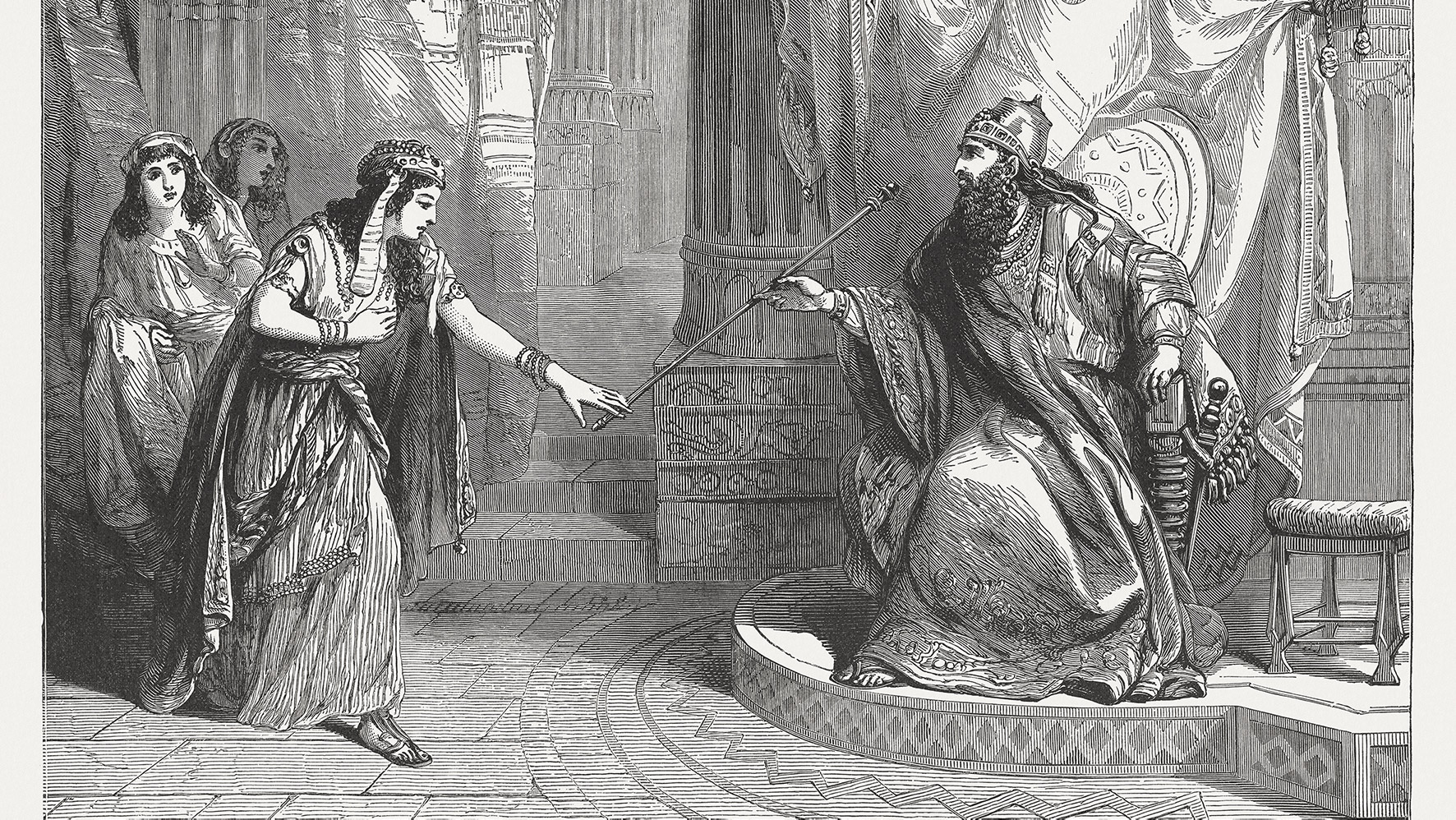Is The Bible History?
May 1, 2021

The Bible is the best-selling book of all time. But while people are aware that the Bible exists, these days relatively few know much about it or have taken the time to actually read it.
To the lazy contemporary mind, the Bible may be seen as a bunch of ancient moralising fables. But dismissing the Bible as mere myth, legend or religious propaganda risks missing its very real value.
The Basics
Although the Bible is usually presented as a single book, it is in fact a collection of 66 documents, or books, written over a period of 1600 years, between circa 1500 BC and AD 100. Some of the Bible’s 40 different authors wrote more than one book; some books were written by more than one author. Some authors clearly identified themselves; others are unknown.
The Bible is divided into the Old Testament and the New Testament; 39 and 27 books, respectively. The Old Testament is sometimes referred to by Christians as the Jewish or Hebrew Bible because it contains the scriptures that Jews accept as being from God. The Old Testament is where the books of Genesis, Joshua and many more which describe the origin of Judaism may be found. The New Testament tells the story of the life of Jesus and the formation of early Christianity, and is accepted by Christians but not by Judaism. This is because Judaism does not accept its central teaching that Jesus Christ is the prophesied Messiah.

ZU_09—Getty Images
The Bible Is—And Isn’t—History
Different books of the Bible were written for different purposes. Some contain sacred songs, poetry and wise sayings; others record prophetic visions or revelations; and others are letters from Christian leaders to believers. And yes, some books are historical records.
Historical sections of the Bible often begin by specifying the historical figure, location and date: “This is what happened during the time of Xerxes, the Xerxes who ruled over 127 provinces stretching from India to Cush: at that time King Xerxes reigned from his royal throne in the citadel of Susa, and in the third year of his reign . . .” (Esther 1:1–3). Obviously, this is quite different from the way a fairytale begins: “Once upon a time, in a faraway land . . .”
It’s also fairly easy to tell which biblical stories are not history. For example, Jesus used stories as a teaching method—allegories, parables, extended metaphors—and it’s usually easy to tell when He was doing this. For example, one of His stories begins with these words: “A certain man was preparing a great banquet and invited many guests. At the time of the banquet he sent his servant to tell those who had been invited, ‘Come, for everything is now ready.’ But they all alike began to make excuses” (Luke 14:16–18). We’re not told the man’s name, the place and time he lived, or even the reason for the banquet. And the fact that every single invited guest refused the invitation is a little too neat and tells us this is unlikely to be historical—although the story contains truth in a deeper sense.
The historical parts of the Bible are important for at least two reasons. First, they provide a framework and context for the sections that are not primarily about recounting history. Prophets rage against the abuses of various kings, nations and empires, for example, but these portions make little sense unless the reader has some knowledge of who and what is being referred to. When the book of Exodus, for example, talks about Moses leading the Israelites out from under Egyptian slavery, it is important to understands what the situation in Egypt was at the time.
And, second, the historical sections of the Bible remind us that its spiritual themes are grounded in the lives of real people, who ate and drank, got married, had kids, experienced ups and downs, and eventually faced death. These are not superhuman demigods, but everyday folks like you and me. We expect outlandish things to happen in an ancient myth or fairytale, but it’s confronting when they are described in the context of what is otherwise a fairly sober historical record. In the midst of ordinariness, God intervenes in people’s lives, and in history, with messages and miracles.
Is The Bible Biased?
History is never neutral. Historians work with the limited information available to them, seek patterns and threads and begin to construct a story that defines key moments and important people. Thus, some facts become crucial, while others are left on the cutting-room floor.
Another historian will look at the same facts, but different patterns will emerge for them. Their interpretation of history may be quite different, highlighting the motivations of other players and the importance of other events. In more recent decades, it’s become accepted for an historian to flag their biases and point of view; to make clear that they are examining the data from a certain perspective, or with a particular focus on a previously ignored minority group. The reader understands no claim is being made that the resulting analysis is objective or the only reasonable interpretation of the available facts. A diligent student of history will seek a range of different perspectives to develop a well-rounded understanding of their chosen period and place.
So, what about the Bible? Is it biased? Is it written with an agenda in mind? The answers have to be yes and yes. Old Testament history is written very much from the perspective of the Hebrew people—it selects their genealogies and their stories. When they win a battle, it’s a triumph. When they lose, it’s a tragedy. Their enemies are the bad guys. The cultural context is nationalistic, patriarchal and often warlike.
The New Testament is similar in that it highlights the origins and experience of the fledgling Christian community in the first century after Jesus time on earth. It’s assumed the reader will be cheering along as the pioneers of the new movement overcome all kinds of political and spiritual obstacles.
And there is a clear agenda. The focus of the Bible writers is on understanding who God is and how we should relate to Him. What else would you expect in a religious book?
But although the Bible contains biased history, it’s not sanitised history. Bible heroes are frequently revealed as flawed human beings. Often, the prophets, after achieving great things in the name of God, fall into despair or drunkenness. Revered patriarchs cheat, squabble and commit incest. Kings become egocentric, commit heinous acts or turn their back on enlightenment they’ve received. The biblical account of these events is raw and earthy; its depiction of human beings has the ring of grim truth.
A careful reader will notice that, through prejudice and patriarchy, blood and gore, higher principles of love, peace, justice and equality emerge—promises of a better order yet to come. There’s a sense of a maturing spirituality that begins to flower in the New Testament book of Acts as the first followers of what we now know as Christianity— exclusively Jews—are confronted with growing evidence that God loves their non-Jewish neighbours— even their enemies—as much as He loves them. In God’s eyes, “There is neither Jew nor Gentile, neither slave nor free, nor is there male and female, for you are all one in Christ Jesus” (Galatians 3:28). It’s radical—especially in the historical setting of the cultural biases that surround it which believers of early Christian faith were dealing with.

Mariedofra—Getty Images
Is Bible History Accurate?
Blood-curdling battles and a higher spiritual awareness are all very well, but can we really trust that when the Bible reads like history that it actually is history?
Answering this question fully would require an examination of every historical fact mentioned in the Bible and comparing it with other available sources—non-biblical ancient writings and archaeological finds. Obviously, there’s not room for an exhaustive analysis here (but
I would encourage the academically minded to do some digging into the historical evidence), so I’ll be selective in providing the beginnings of an answer.
Here are three examples:
HITTITES
Archaeologist David Down writes, “according to the biblical record, the Hittites were a well-recognised and an important and powerful nation. Yet because no ancient historian mentioned them, and because they appeared to leave no archaeological footprint, critics of the Bible relegated them to the realm of myth”. Even though the Bible mentions the Hittites associating with King David, there was no archaeological evidence to verify their existence. This was the situation up to 1800. But, as the academic discipline of archaeology began to boom through the 19th century, a number of stones bearing a strange semi-hieroglyph script began to attract attention. They were found within ancient city ruins in central and coastal parts of Turkey, as well as over the Syrian border, indicating that this had been a large civilisation. When archaeologist Archibald Sayce announced in 1880 that these were the remnants of the biblical Hittite empire, he was greeted with scepticism. But, as further discoveries were made and the language was gradually decoded, archaeologists and historians found the evidence was overwhelming. Yes, the Bible had preserved an accurate account of this forgotten people.
DEAD SEA SCROLLS
The Bible contains prophecies about the future; and history has indeed unfolded according to these predictions. A search for rational explanations led many scholars to suggest the prophecies were written after the fact. But then, in 1948, a Bedouin goatherd stumbled across a cache of ancient scrolls in a cave near the Dead Sea, Israel. There were large and small remnants of every Old Testament book, including a complete scroll of Isaiah, which predicted, among other things, the coming of a Suffering Servant who would not protest His mistreatment, die for the sins of the people and be buried in a rich man’s grave, but nevertheless would have “a portion among the great” (53:12)—remarkable parallels with the trial, execution and resurrection of Jesus Christ. But, significantly, the Dead Sea Scrolls were dated about two centuries before Christ’s birth—evidence that goes beyond mere history into His-story.
NEW TESTAMENT
Another common criticism is that the Bible’s historical accuracy has been mangled through the centuries—religious adherents have since added their spin to reinforce the beliefs of their faith community. How do we determine the accuracy of the Bible when the original writings have been lost? “For any particular work or collection of works, the greater the number and the earlier the dating of the manuscripts, the easier it is to reconstruct a text closer to the original and identify errors or discrepancies,” says Sean McDowell, a Bible apologist. That makes sense: the earlier the manuscript, the less opportunities to make changes; the more manuscripts there are, the harder it is to take the original text out of circulation and replace it.
So how does the New Testament stack up? According to McDowell, the oldest New Testament fragment we have dates to 130 AD and the latest count of manuscripts stands at almost 24,000—all of which closely parallel the others, as well as the text of the New Testament we have in Bibles today. The next-best-attested text from the same period—Homer’s Iliad—has less than 2000 ancient manuscripts. Considering the last of Jesus’ 12 apostles didn’t die until somewhere between 90 and 120 AD, that doesn’t leave a lot of time to spice up the story in the absence of inconvenient eyewitnesses.
None of these three points is a final slam-dunk in the Bible’s favour. Intelligent, well-researched people have come to a range of conclusions about the historicity and accurate transmission of biblical manuscripts. But what is presented here should dispel the kneejerk dismissal of the Bible by a genuine seeker for truth. Are you ready to go deeper?
A former editor of Signs of the Times, Kent Kingston supports and advocates for people with cognitive impairments impacted by the NSW criminal justice system. He lives with his wife, Miriam, on the shores of Lake Macquarie.






